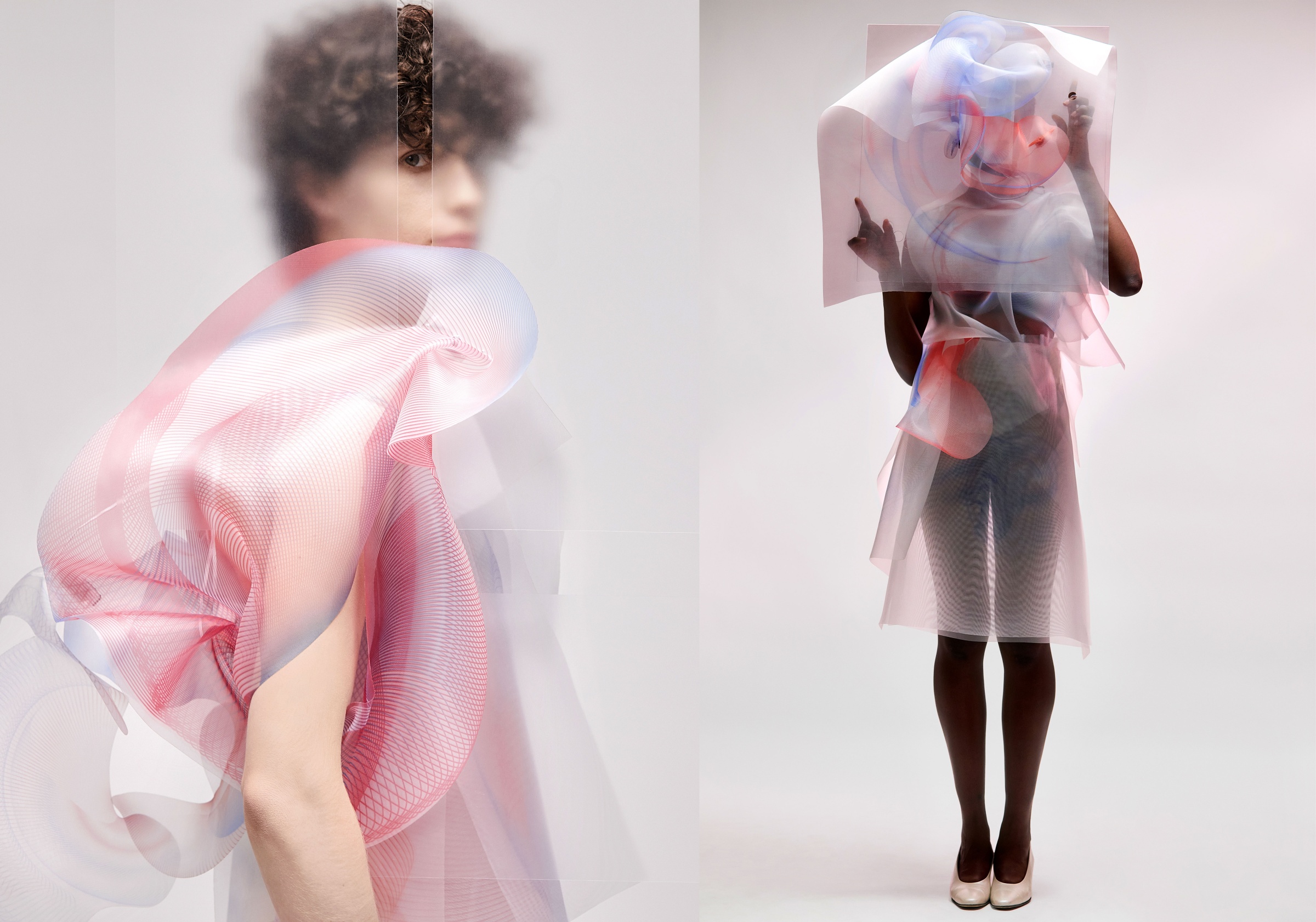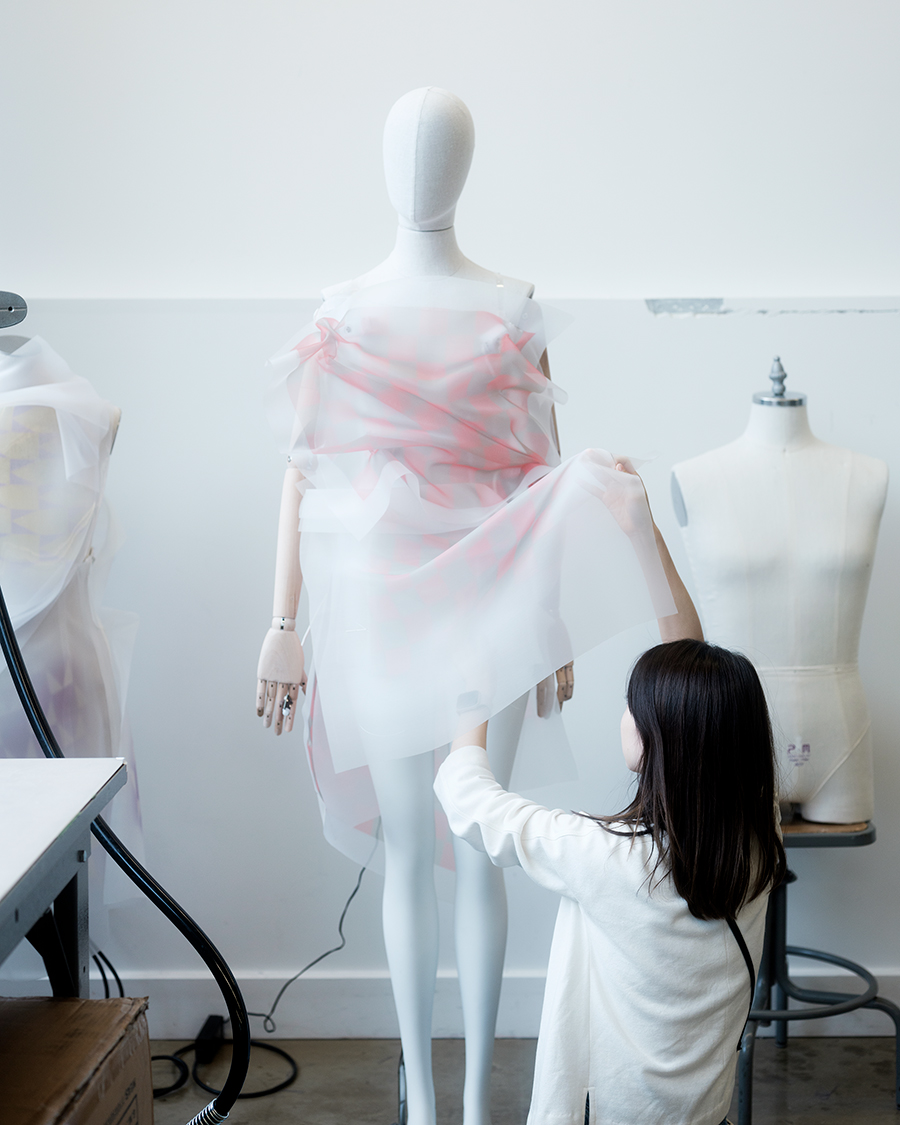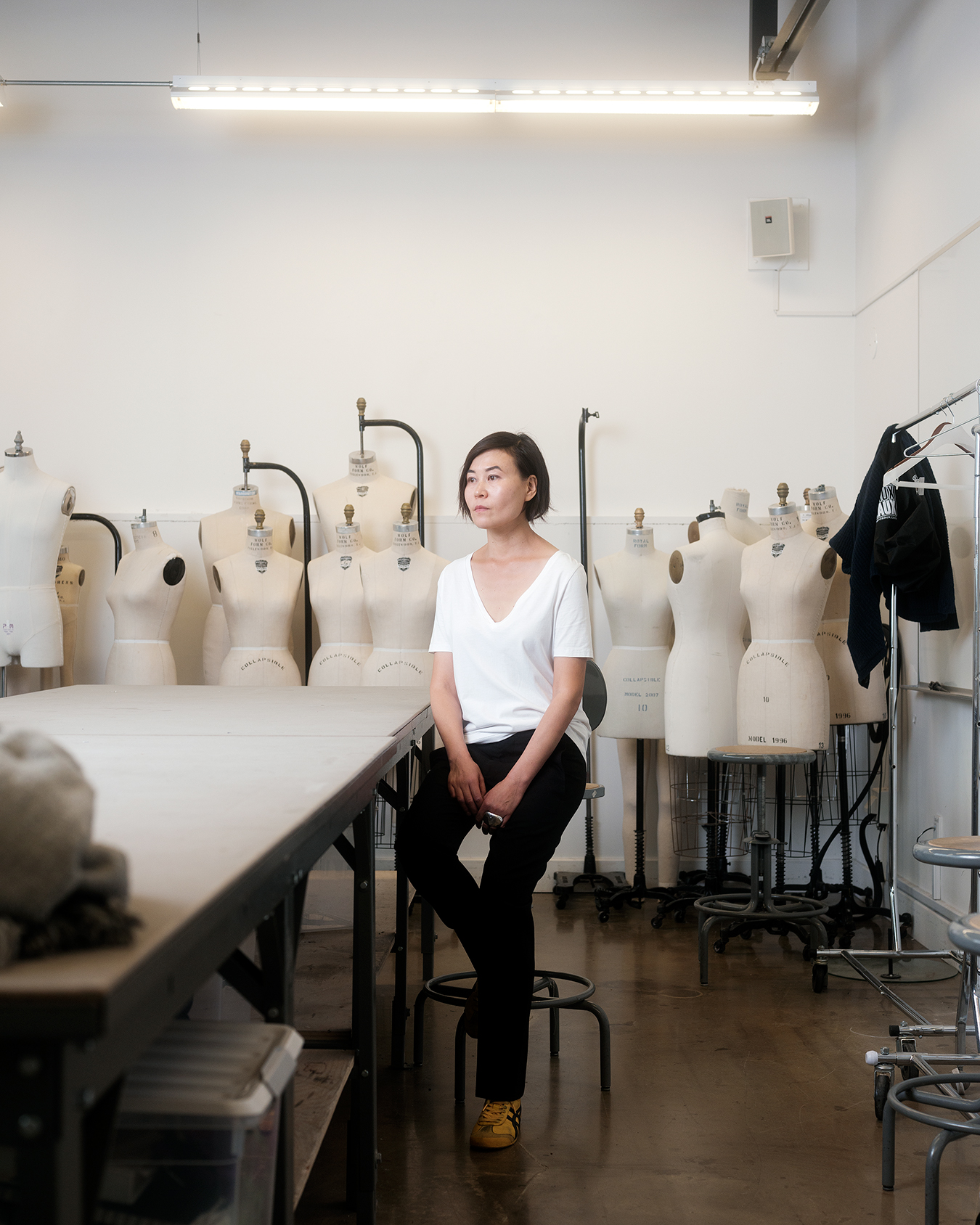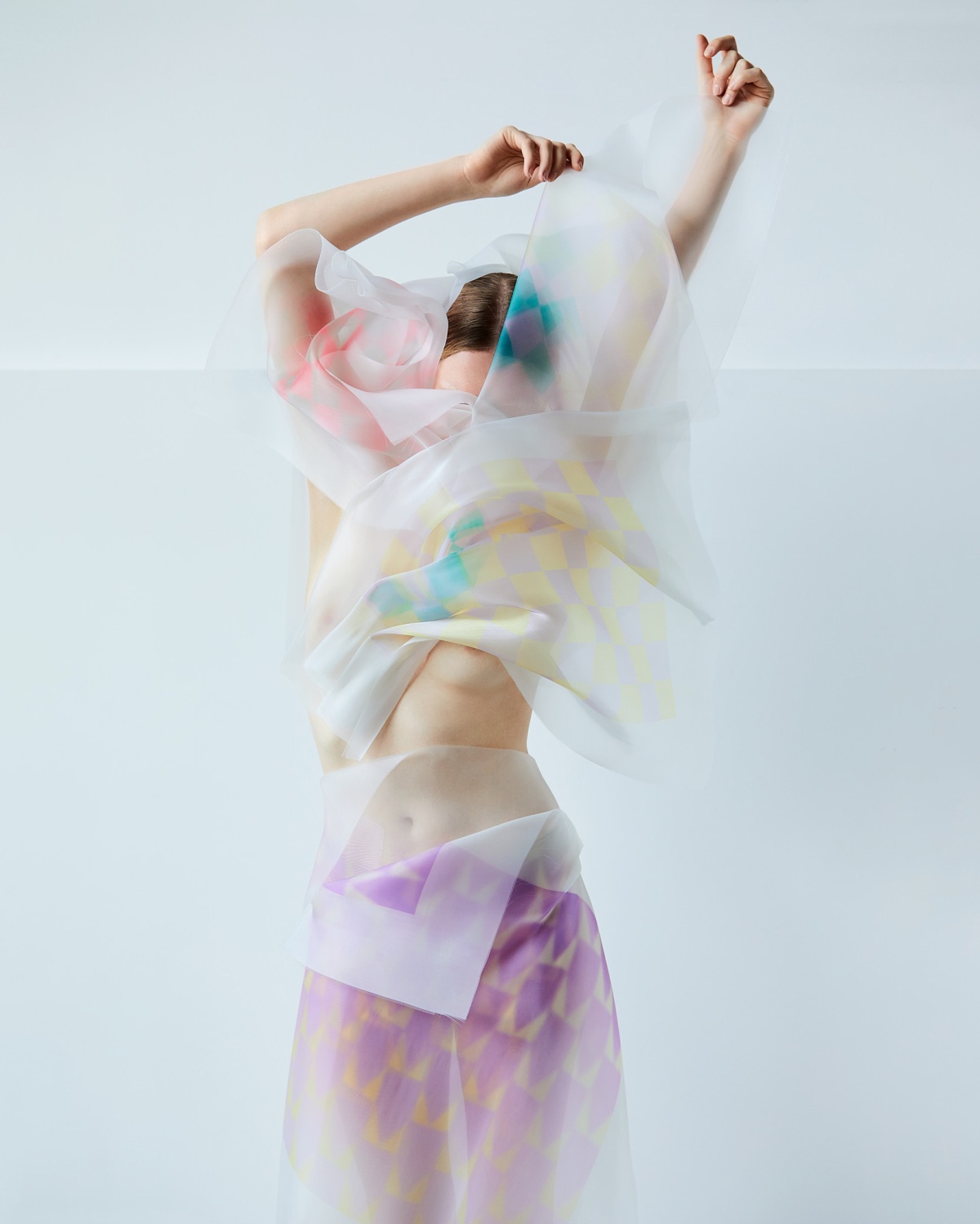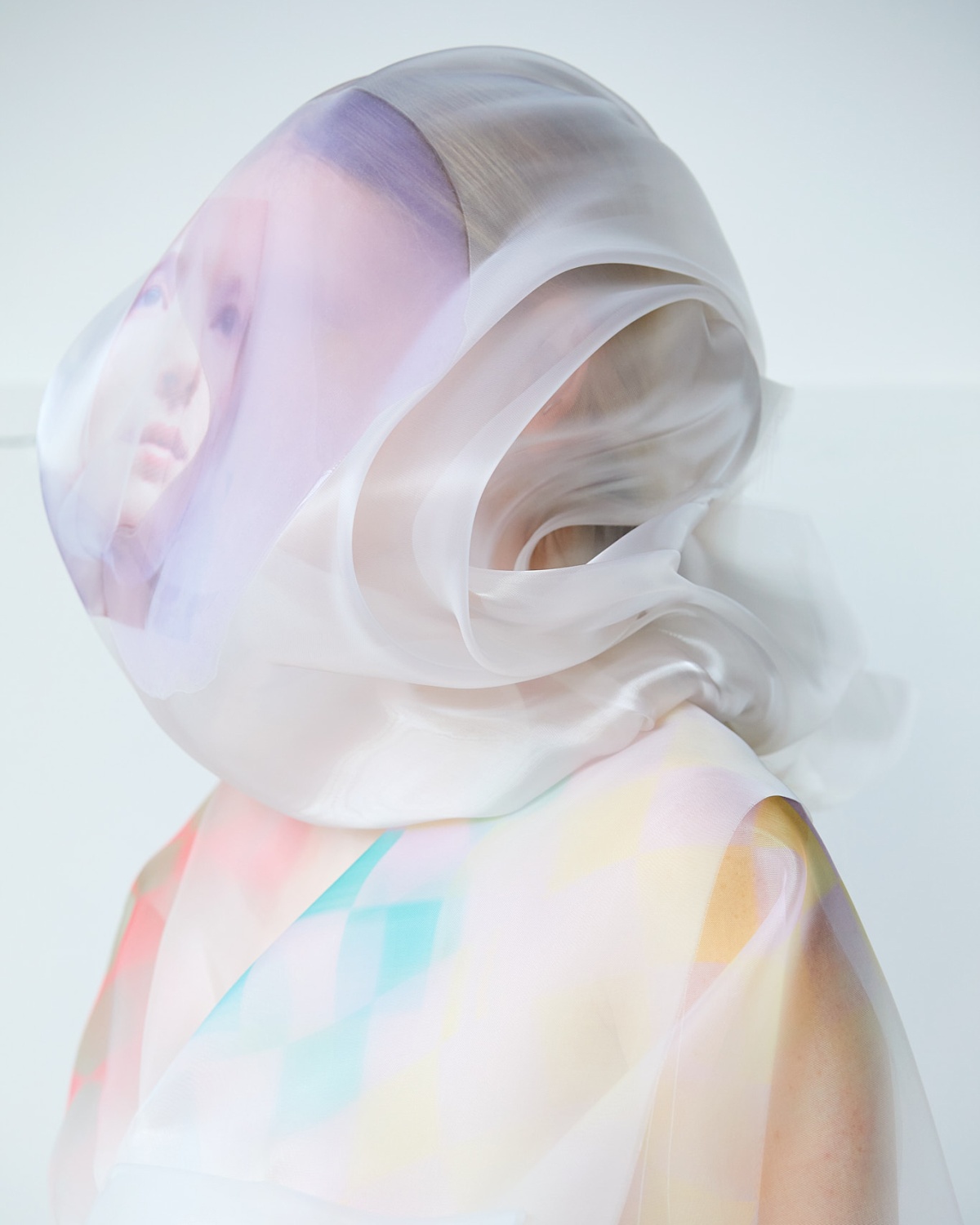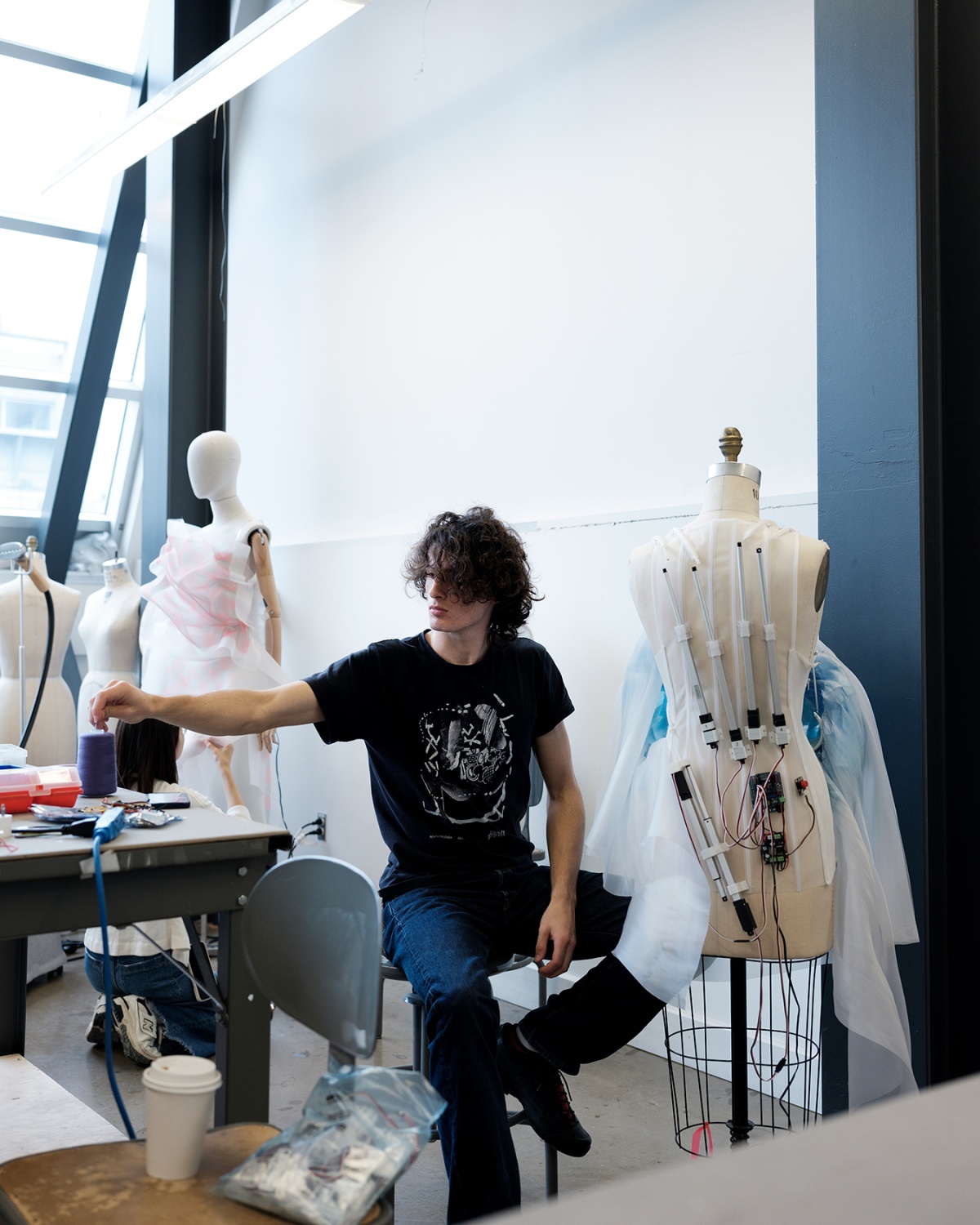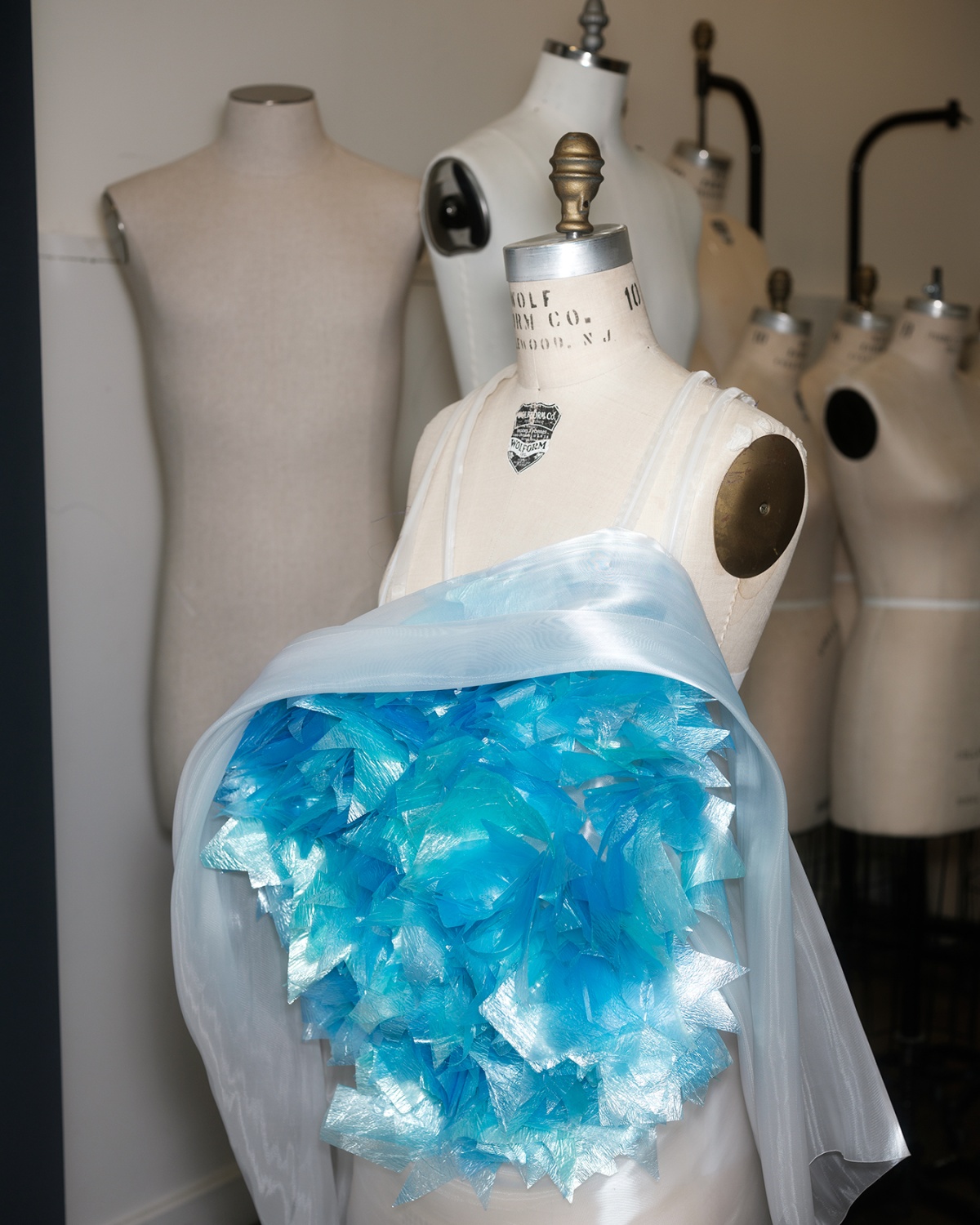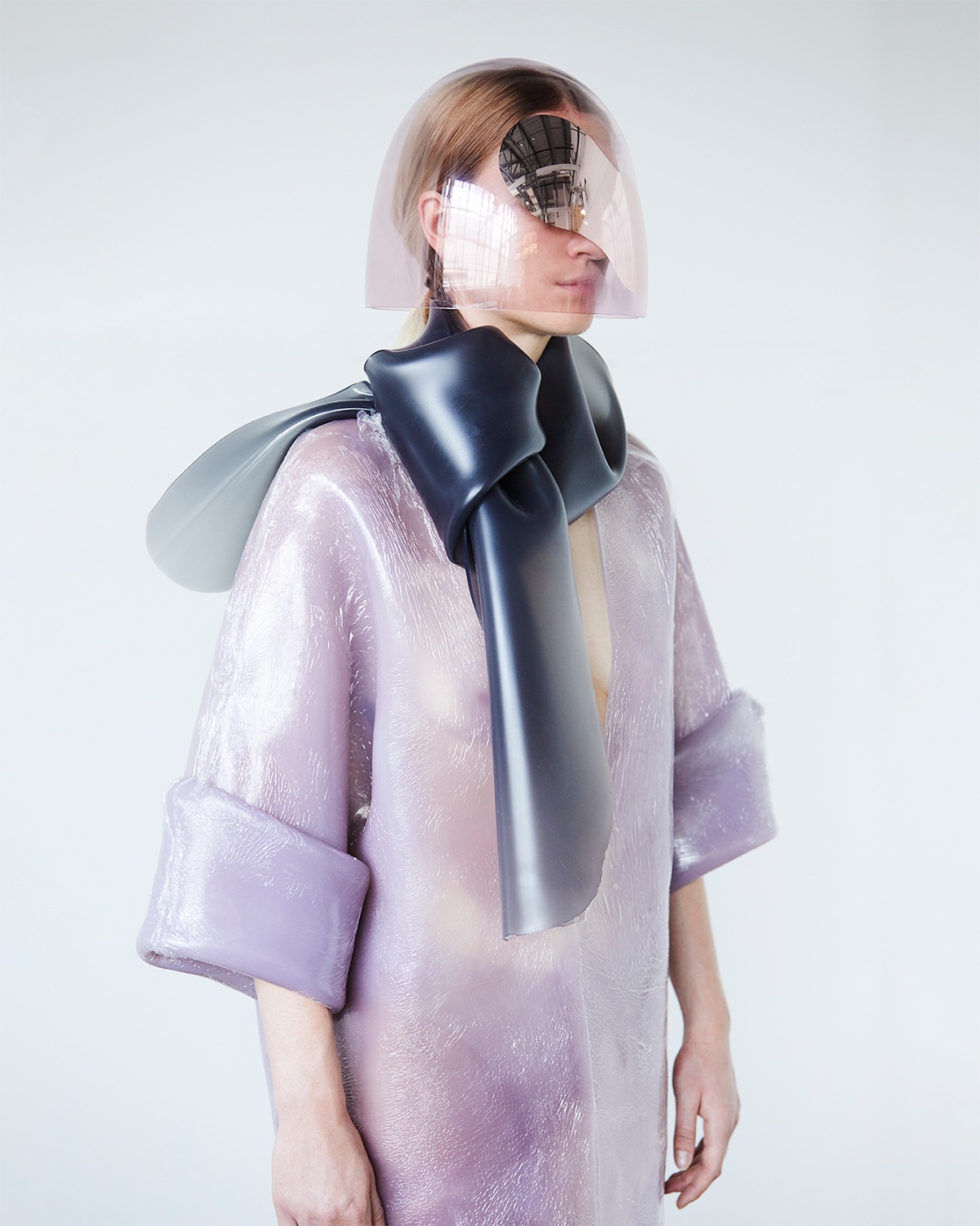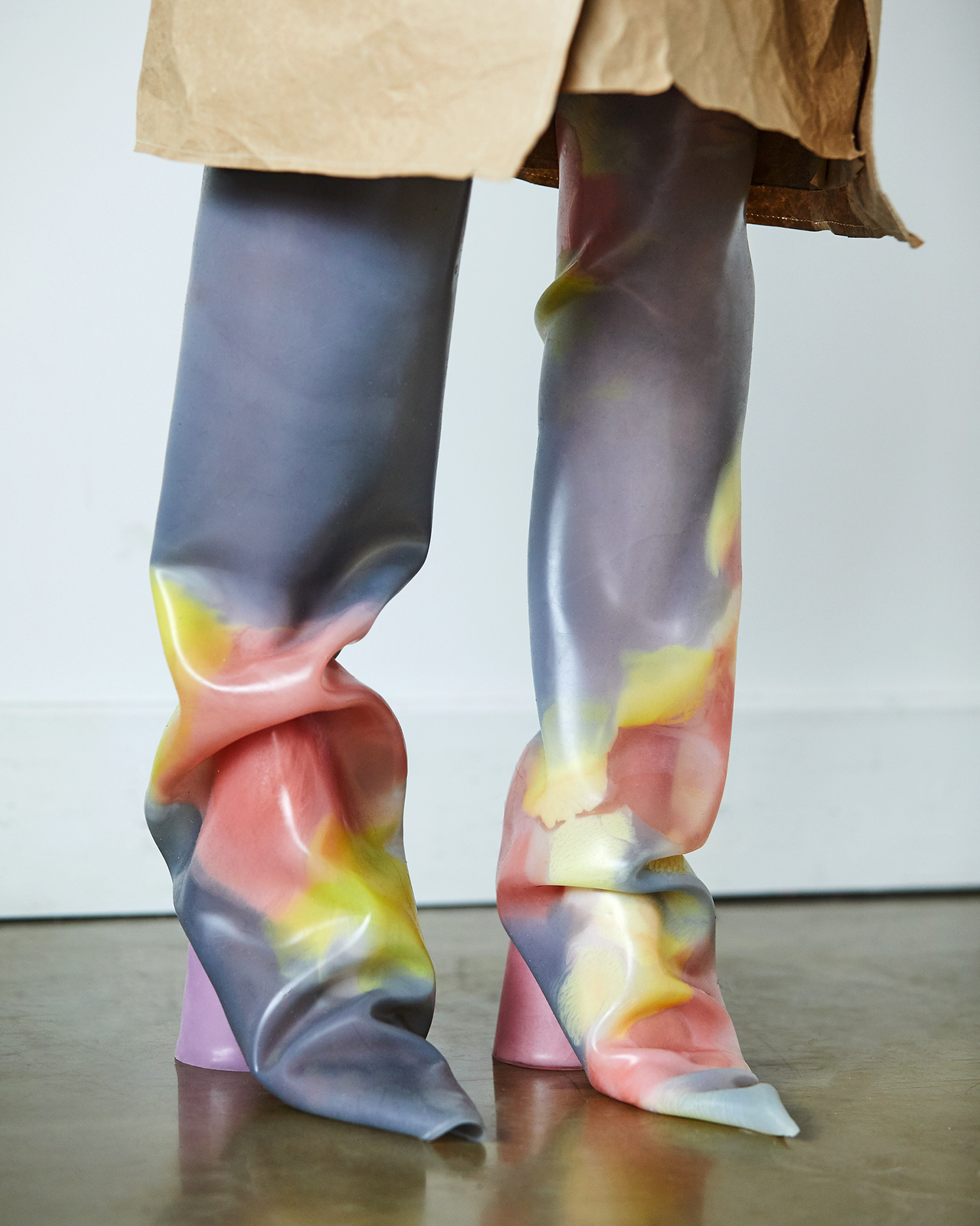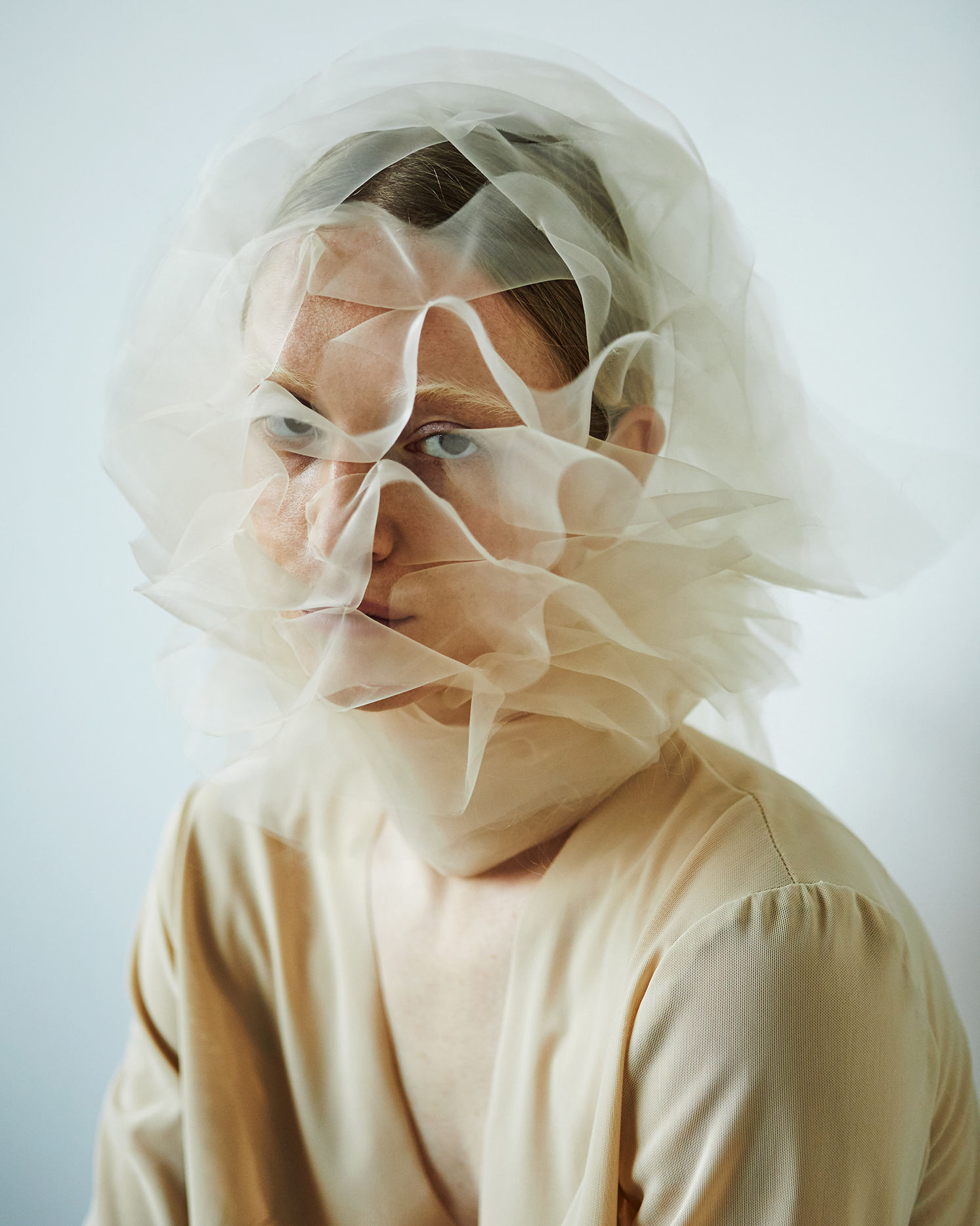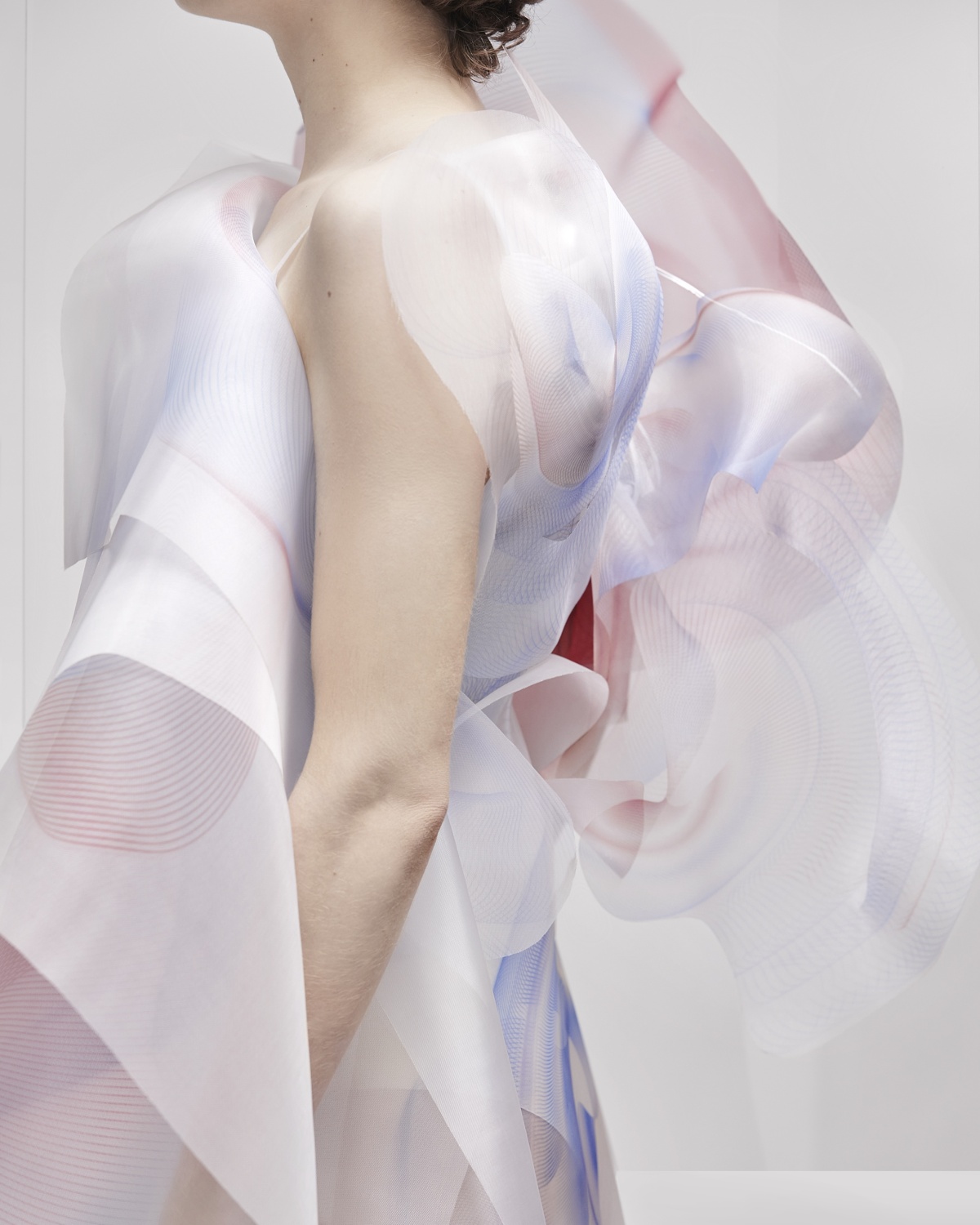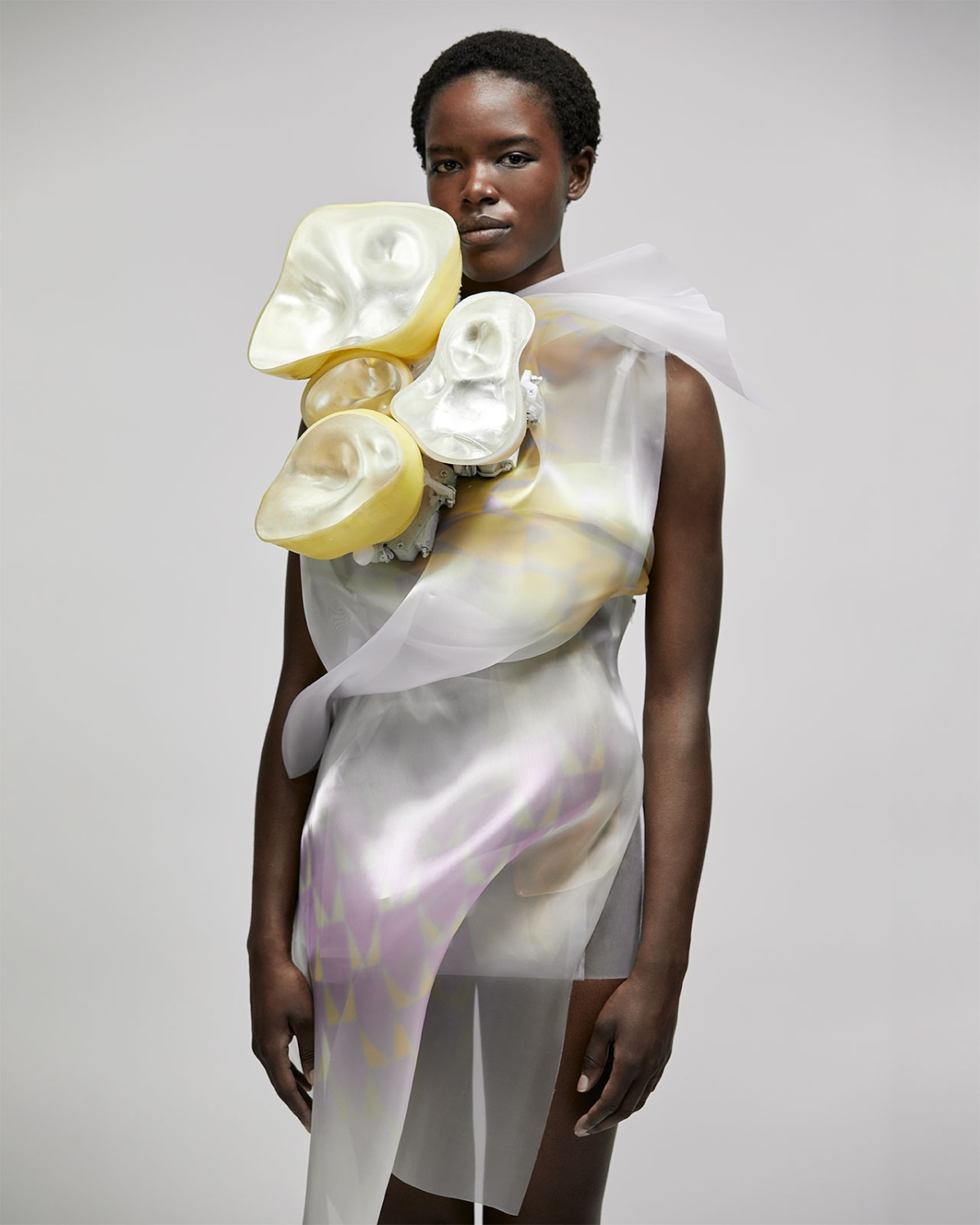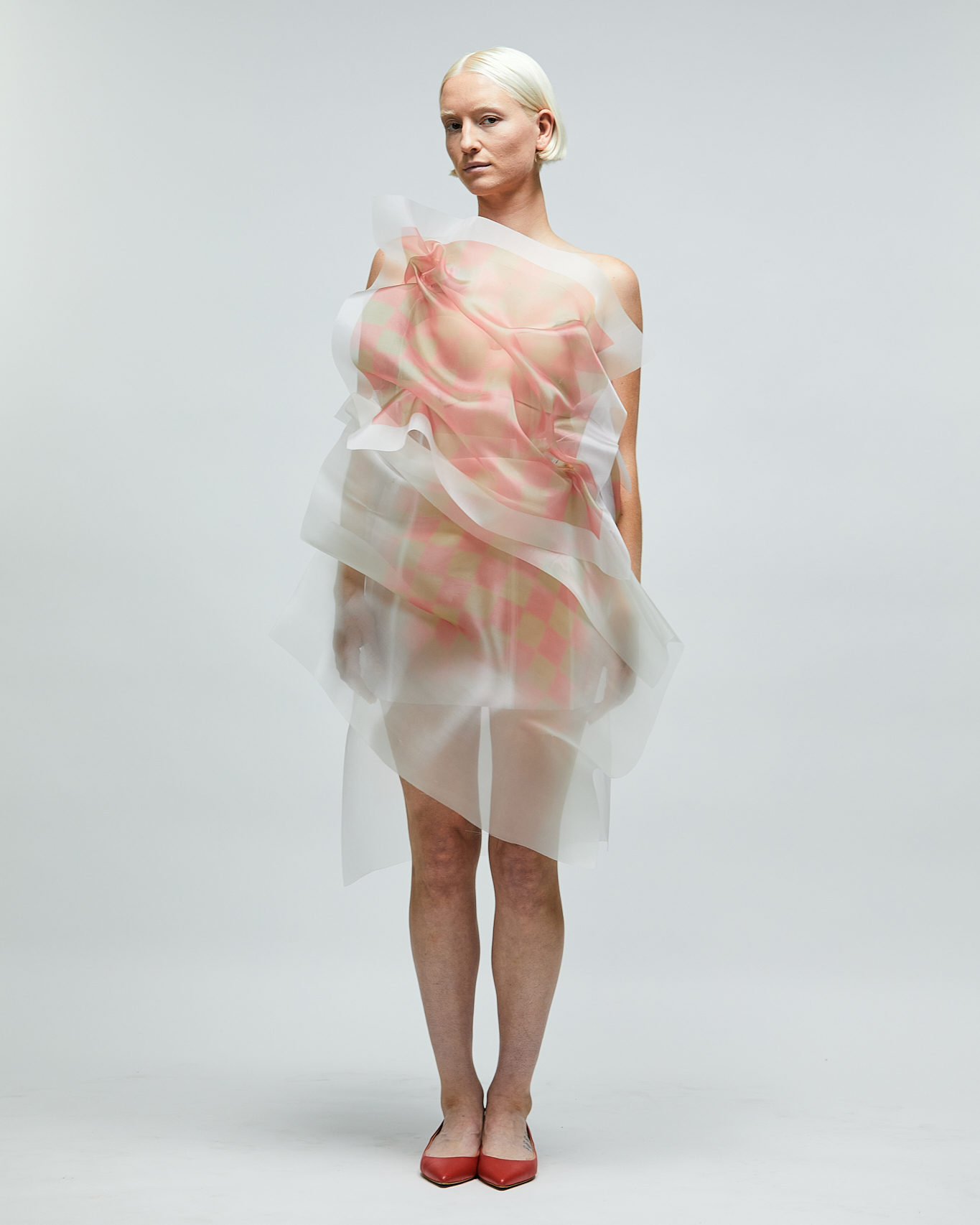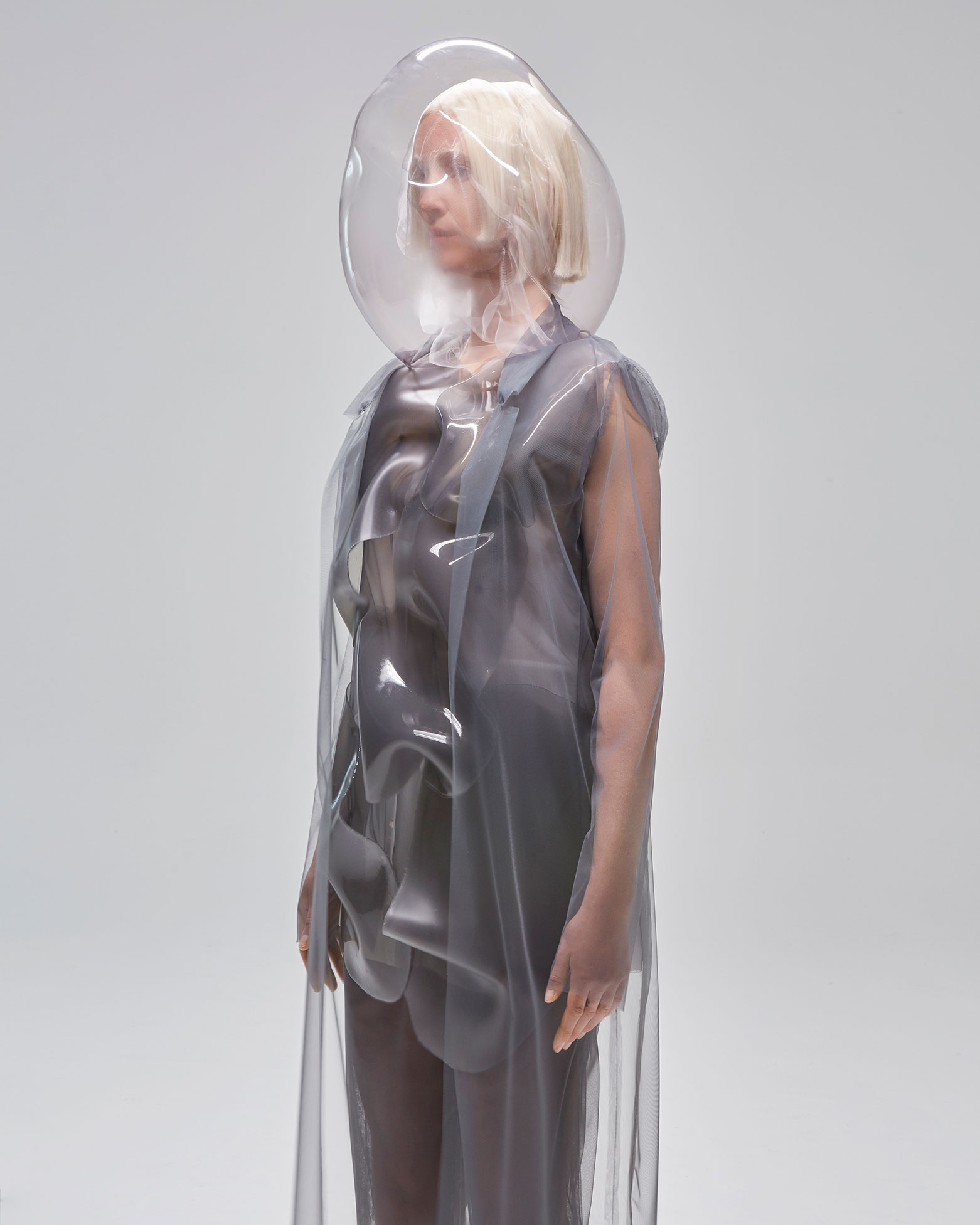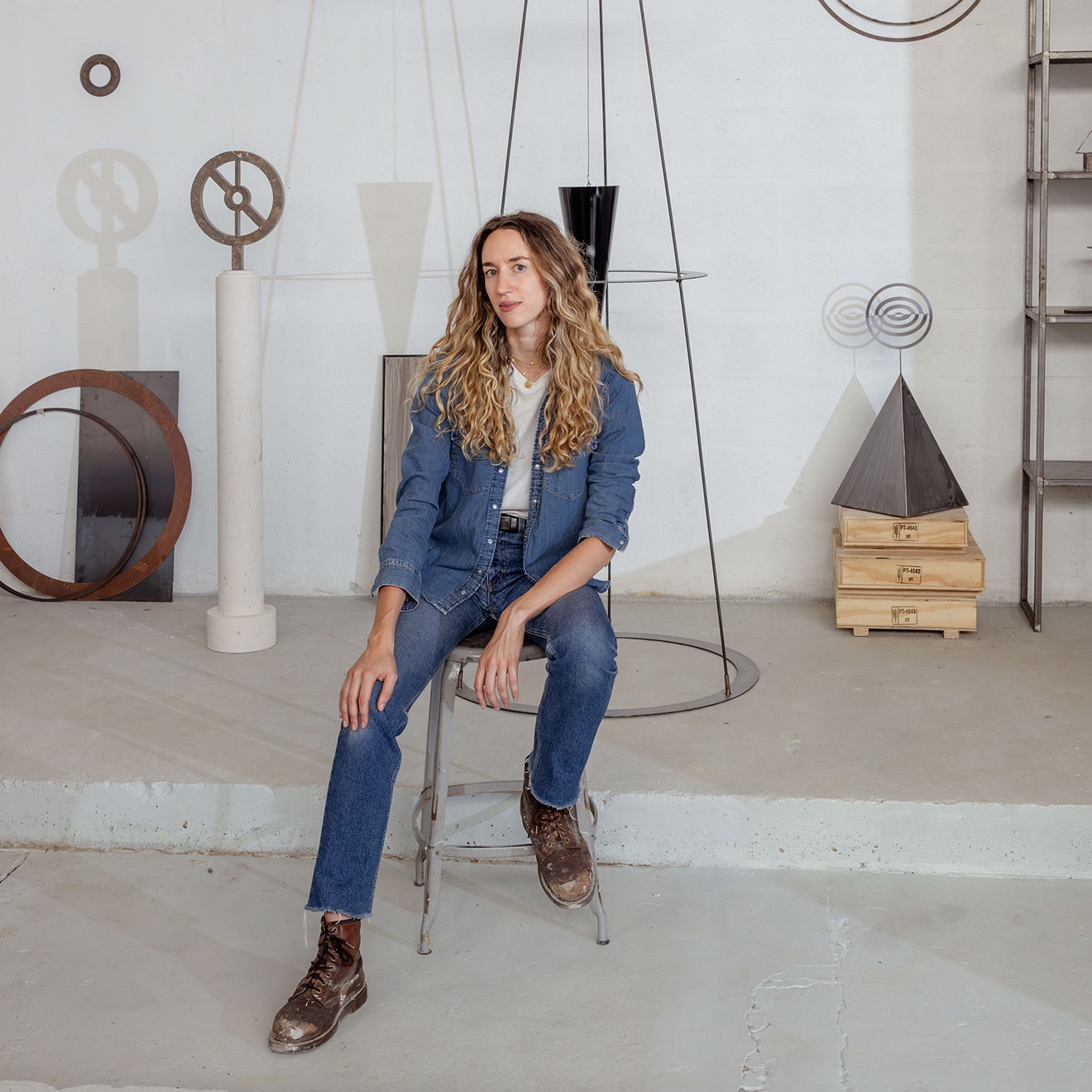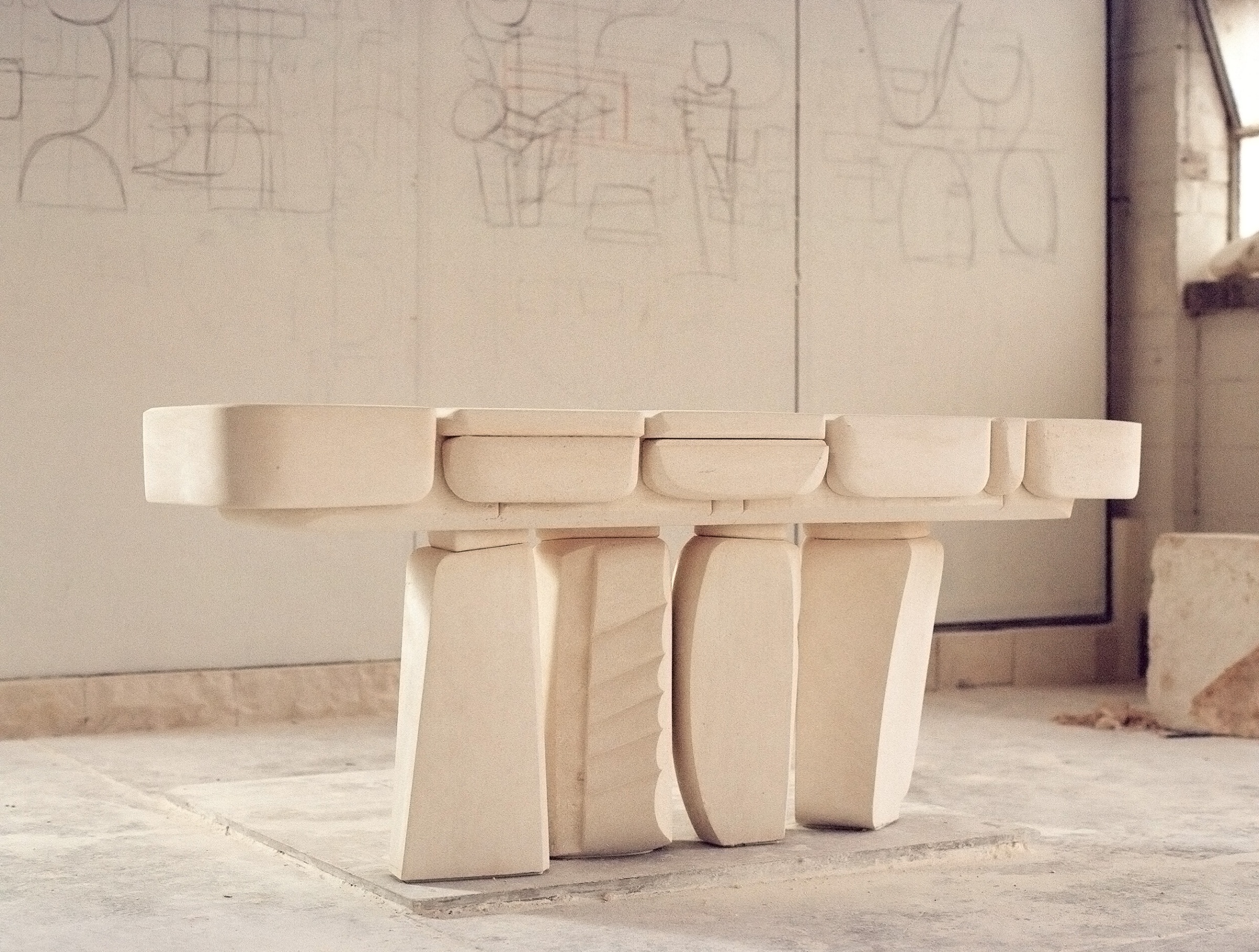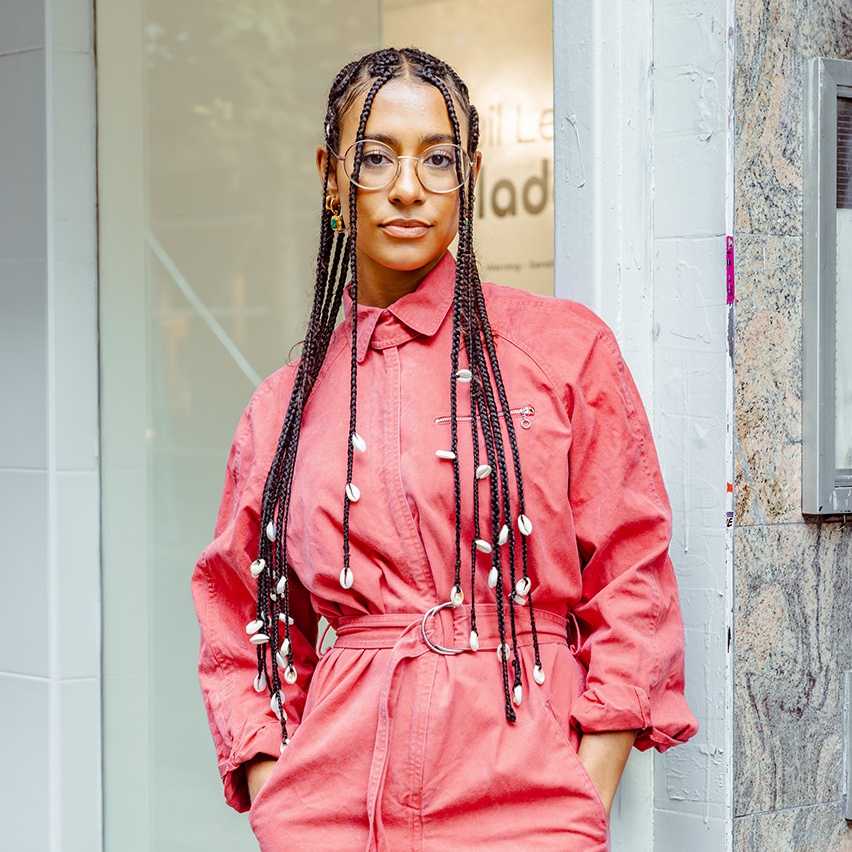The light is the first thing one notices when they enter fashion designer Ying Gao’s downtown Montreal studio. Sun pours in from the workshop’s massive windows and skylight, and an overall lightness of being appears to facilitate a peaceful yet incredibly detail-oriented creative process.
Dressed in a simple but impeccably tailored white tee and flared jeans paired with red chunky sandals, the Chinese-raised, Swiss-educated, Montreal-based designer is deliberating with her assistant when I walk in. I find Ying sitting at her desk, surrounded by a large assortment of design books. She smiles as she motions for me to come in.
- A studio assistant perfects the draping on a new piece. Photo by Guillaume Simoneau
- Fashion designer and professor at University of Quebec in Montreal Ying Gao breaks the rules with otherworldly designs. Photo by Guillaume Simoneau
In the adjacent workspace, design students from the city’s French and English universities are quietly collaborating, trying to work around a variety of textile and technological challenges involving Ying’s new creative work. One student meticulously irons a piece of fabric while another pins it on a mannequin torso. One assistant taps away on her laptop, creating code that controls an assembly of wires and computer-programmed electronic components that make what looks like a kaleidoscope of broken glass come to life.
As a full-time professor at the French-language University of Quebec’s École supérieure de mode based in downtown Montreal, Ying begins most of her days in the university’s studio. “I’m a teacher, first and foremost,” she tells me. “I spend most of my time here.”
Ying usually arrives around 9am to meet with her assistants, review the plan for the day, and supervise the creation of assigned projects. “A lot of my work involves the technical and technological aspects of the designs, but I also handle most of the administrative work involved in getting some of these exhibitions off the ground,” she says. “The day goes by in a flash.”
- “FILM NOIR,” silicon, super organza, polyester, silk, 2021. Photo by Maude Arsenault
- “FILM NOIR,” silicon, super organza, polyester, silk, 2021. Photo by Maude Arsenault
Thanks to her diplomat parent, the designer spent her childhood between Switzerland and China. Last time Sixtysix spoke with Ying Gao, she recalled her first glimpse of the elegance and infinitudes of fashion at an Yves Saint Laurent exhibit in Beijing. The experience inspired her to study fashion at Haute École d’Art et de Design in Geneva, Switzerland before coming to Montreal at age 20 to complete her MA in interactive multimedia. Now, with two decades as a professor at the university under her belt, she says she’s more of a Montrealer than anything else.
Ying spends most of her days teaching and mentoring design students, but her creative work doesn’t appear to have suffered. Her designs have been featured in six solo exhibitions and more than 100 exhibitions around the world.
- A work in progress offers a glimpse of the technology inside Ying’s designs. Photo by Guillaume Simoneau
- Photo by Guillaume Simoneau
Despite her success Ying is soft-spoken, unassuming, and often meanders away from our topic to excitedly share her love for Greece (she recently visited the island of Hydra) or laugh as she confides her tendency to eat the same thing over and over again.
While she admits a fondness for routine, she’s known for her highly experimental and interactive garments inspired by the digital world. Her designs move and respond to various stimuli like virtual clothing. They’re like science fiction both in appearance and reaction.
- “Purple Skin,” glass, silicon, super organza, PVDF, 2020. Photo by Maude Arsenault
- “Third Skin,” silicon, super organza, kraft paper, 2020. Photo by Maude Arsenault
For “Flowing Water, Standing Time” Ying created a pair of robotic dresses that react to their environment by rippling, twisting, expanding, and contracting as if they’re living entities. She’s also used technology to create dresses that respond to colors in the environment or when someone stares at them. For her “Walking City” collection, Ying incorporated concealed pneumatic pumps and sensors sewn directly on nylon and cotton so clothes appeared to breathe when their origami-style folds filled with air.
Another project, “Possible Tomorrows,” features interactive clothing embedded with fingerprint recognition technology that acknowledges only strangers. The clothes only react and move when touched by someone whose fingerprints are not recognized by the scanning technology.
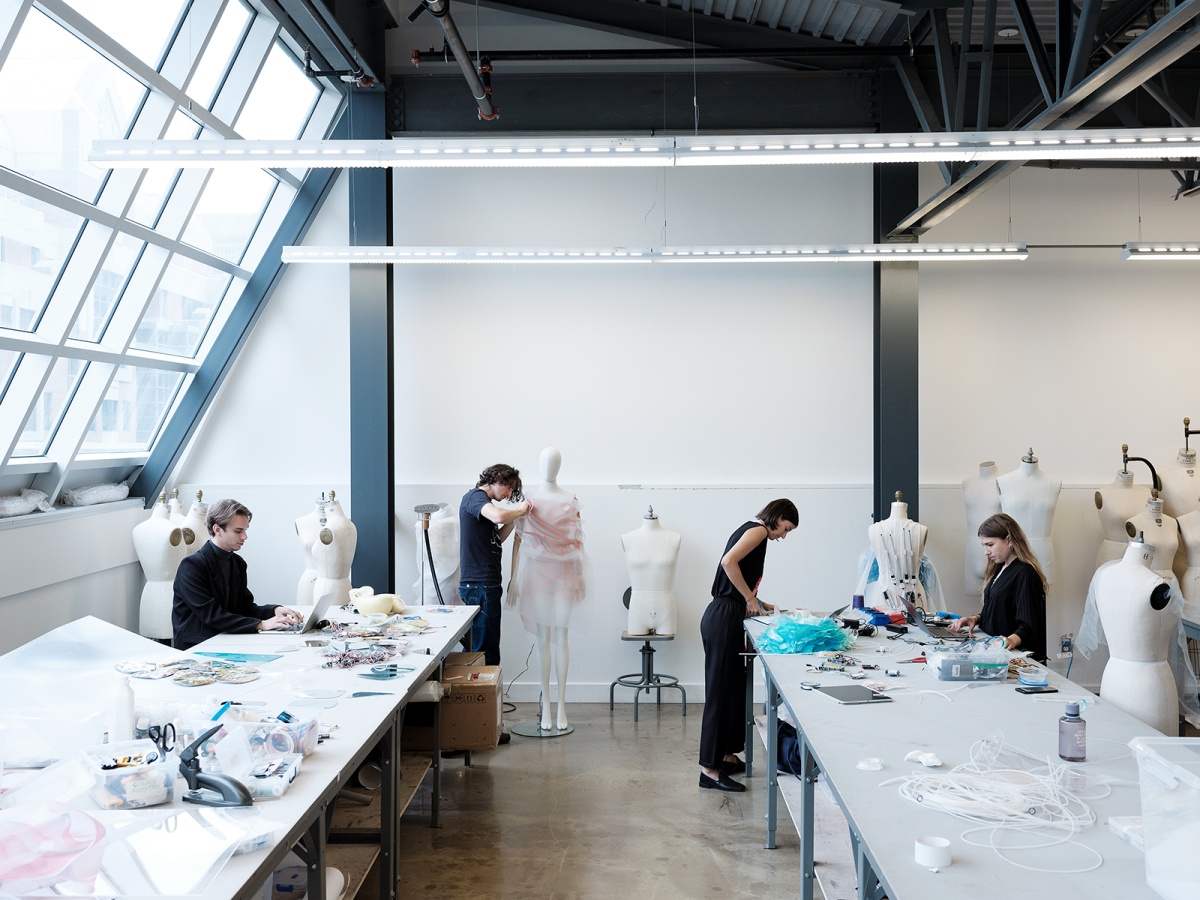
Design students quietly collaborate in Ying Gao’s workspace. Photo by Guillaume Simoneau
And in her most recent collection, “In Camera,” two interactive garments detect the lenses of cameras and shift in response. The clothing offers an exploration of perception, the coexistence of public and private. The collection “does not want to be photographed,” yet it requires the gaze of the photographer to realize its dimensionality.
“As a fashion designer, images are of course important to my work, yet they also tend to flatten everything and to become unfaithful, because they are easily and readily manipulated. To animate a garment is to contradict its instrumental status as passive prosthesis. The idea is to give voice to clothing objects, to emancipate them, to free them from a passivity they have not chosen.”
Combining fashion design, product design, and media design, Ying uses materials like silicone, glass, plastic, and even artificial skin to create her conceptual art. She wants to fashion something tangible from the intangible. She wants clothes to be seen as fictional design and not merely as garments used to cover up our bodies.
- “Third Skin,” silicon, super organza, kraft paper, 2020. Photo by Maude Arsenault
- “Third Skin,” silicon, super organza, kraft paper, 2020. Photo by Maude Arsenault
Is art part of your family’s background?
No. My parents are intellectuals. They’re much more interested in literature and politics than art. I’m not even that interested in art. It’s design that really captivates me. The object interests me. It’s why I have a hard time with contemporary art. When it’s too conceptual I lose interest. I’m attracted to the object, the material used, and how I can use it.
Was there one moment when you knew design and art were going to be part of your future?
Yes, a very specific moment. I was around 8 years old, and my mother took me to see an Yves Saint Laurent exhibition at the Peking Fine Arts Gallery. Living in communist China, everyone was dressed in gray and blue. I actually loved the uniformity of it all. There’s something very reassuring and even relaxing for the eyes about all that sameness. But when I arrived at the exhibition I was struck by the richness of both color and materials. It was very different from what I saw on a daily basis. I didn’t necessarily find it beautiful; I found it different. That’s what mostly attracted me to it. The connection between fashion and creating something different was instant for me. I concluded that by being a designer I, too, could create something different. After the exhibition my mother says I started designing. I haven’t done anything else since.
- “IN CAMERA,” mesh, PVDF, electronic components, 2023. Photo by Maude Arsenault
- “2 5 2 6,” Organdy, glass, silicone, electronic devices, 2022. Photo by Maude Arsenault
What most inspires your work?
Strangely enough, literature. Most of the time I’ll read something, and it will inspire me. It could be a unique medical case or a compilation of essays. Flowing Water, Standing Time was inspired by neurologist Oliver Sacks’ novel, The Man Who Mistook His Wife for a Hat. In it 49-year-old Jimmie believes he has been 19 for decades. When faced with a mirror he’s shocked by his aged appearance but reverts to being 19 when not viewing his reflection. He, like the garments in this piece, alternates between states in reaction to the spectator. I created robotic clothing that reacts to what they see.
I’m inspired by the immaterial. I think I’m attracted by everything that is intangible. Another book I found inspiring was Esthétique de la disparition (The aesthetics of disappearance) by Paul Virilio. In it the author questions unconscious perceptions about the authenticity of images and the manipulations they’re often subject to. Anything that allows room for imagination compels me. I’m rarely inspired by concrete objects like a painting. It’s too visual. I need the freedom of interpreting something for myself. I like taking something immaterial and creating something material.
Your work, which you refer to as “design fiction,” is very experimental. Why?
Since I’m such a creature of habit in my daily routine, I like to experiment at work. People who have a lot of routine at work may prefer to try something different outside of work. I think every person has their own way of experimenting in life. My way of doing it is by speculative designing and often posing the question, “And if?” And if the material was different? And if I had made this differently, what would the end result be?
- “2 5 2 6” Organdy, glass, silicone, electronic devices, 2022. Photo by Maude Arsenault
- “FLOWING WATER, STANDING TIME,” silicone, glass, PVDF, electronic devices, 2019. Photo by Maude Arsenault
What is a typical day as a designer for you?
My daily work essentially starts the night before. I dream of designing. It’s something I should work on because it’s not relaxing. In the middle of the night I’ll think of the material we’re using on a specific project and how to make it better. I’m constantly working—while walking, while doing other things. It’s stimulating, but I have a hard time disconnecting.
I usually start my day at the university, meeting with my assistants who are mostly bachelor’s and master’s students, to plan our day. Don’t forget that my real job is as a university professor. I handle academic files that have nothing to do with my creative work but are essential to me.
What do you most hope to teach your students?
Difference. Create something different. It’s very easy to be comforted by routine; it’s reassuring. I understand that because I’m a real creature of habit in my day-to-day life. At the end of my day I always take a long walk in my neighborhood park, and that rarely changes. But when it comes to work I prefer to encourage my students to tell their personal stories. Every story has already been told, but it’s the way someone tells theirs that makes the difference.
How does Montreal influence and shape your style?
I adore Montreal. There’s no other city I can imagine myself living in. Perhaps Chicago, or maybe Taipei. But no, not even. Every time I come back from a trip, even if I loved my travel destination, I feel like I’m coming home. I feel a profound sense of freedom here. I feel supported in my work and in my life. I feel free.
A version of this article originally appeared in Sixtysix Issue 11 with the title “Free to Be.” Subscribe today.
